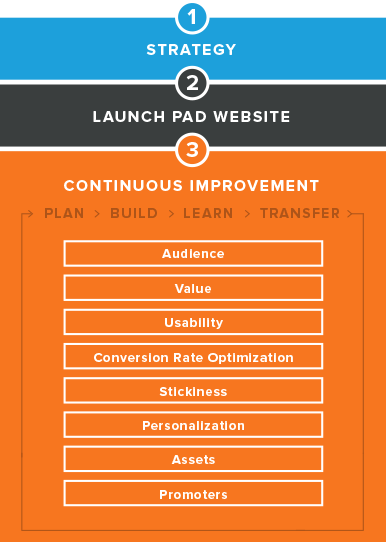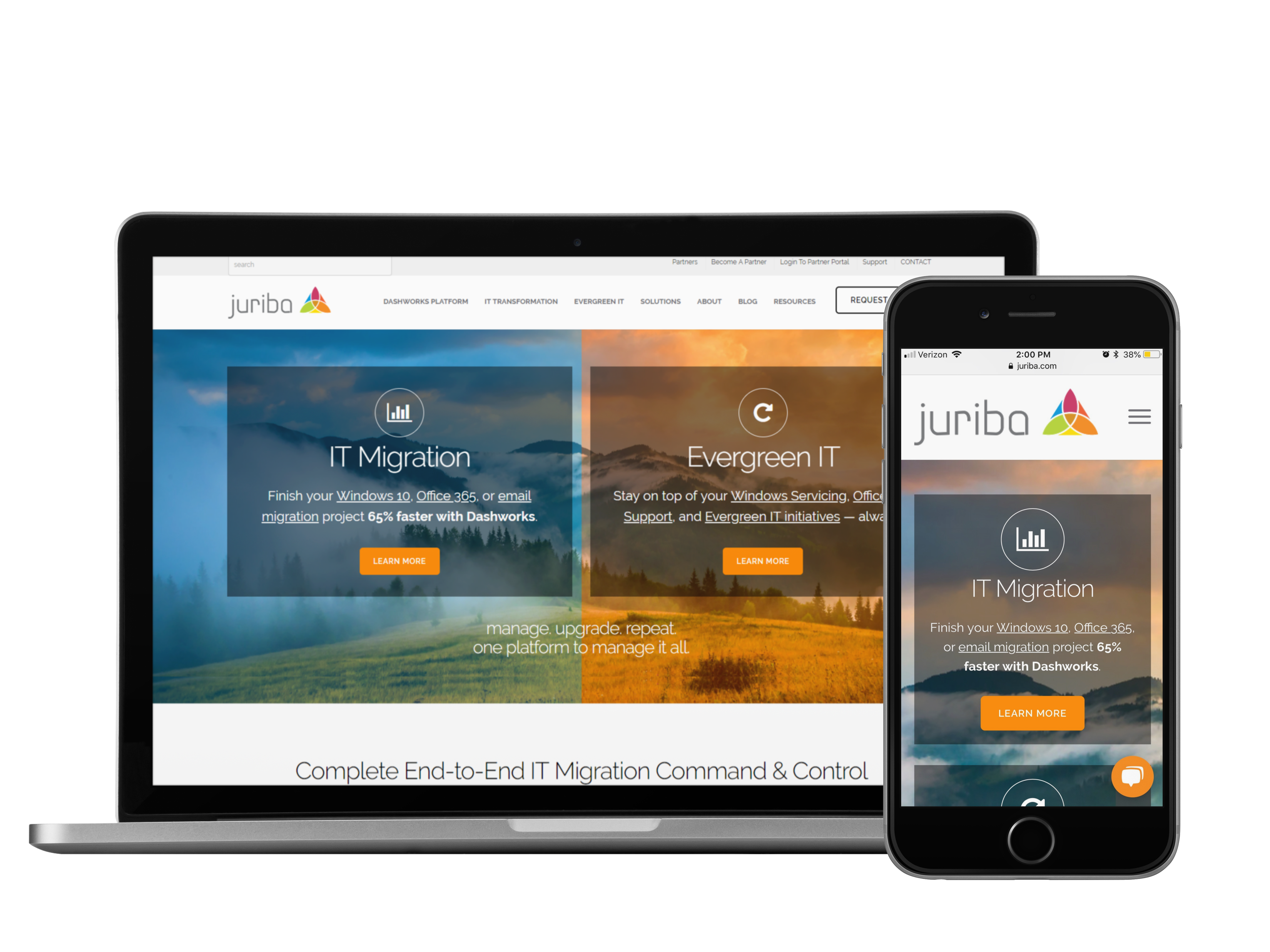What Can You Expect When Starting With Growth-Driven Design?
A few days ago, we talked about why your new website is likely to fail: Traditionally built websites are incredibly hard to scope, they are developed in a bubble separate from the user, and they won't be improved upon until the next redesign project in 2-3 years. Since this website is the best guess of what will perform best, without any actual user feedback or input, it is bound to result in sub-par performance.
Today, let's look at what the Growth-Driven Design process looks like.
Growth-Driven Design is a new approach to web design, but not a revolutionary way to manage development. Did you ever hear about agile development or lead manufacturing? Well, it's based on the same principles to reduce the headaches of traditional website design:
- Small, iterative improvements based on user feedback
- Maximizes results and business values because of constant user learning
- Informs the next iterative cycles as well as other business units such as customer service, sales, and marketing
Whereas traditional web design operates in a bubble every 2-3 years, GDD will launch an initial launchpad website quickly and then improve upon it in monthly cycles using an iterative methodology called the website hierarchy.

Step 1: Website Strategy (First 15 to 30 days)
The first step in any Growth-Driven Design (and Inbound Marketing) engagement is the strategy phase. The goal here is to develop an empathetic understanding of your users in order to figure out how the website can best serve them. Just like Inbound Marketing, this starts with your ideal buyers:
- Who do you want to attract to your website and who not?
- Who are your most profitable customers?
- What are their challenges or problems that your solution(s) can help solve?
- What does the decision-making process look like?
- Where are they looking for help?
- Who are the influencers or decision makers?
Once we truly understand who we are trying to help and how we can break it down into a wishlist of potential user solutions that are relevant for the business and translate them into possible features and functions.
Outcome: 75-200 wishlist items.
Step 2: Launchpad Website (First 30 to 45 days)
The point of Growth-Driven Design is to launch something very good very quickly and then improve upon it — so you can expect your initial launchpad website to go live within 30-45 days. Is it going to be perfect? No, because there is no such thing as perfect. But most likely it will be much better than your existing site already!
How do we determine which features and functions are going to be included? Well, since we know a lot about your audience and their preferences, or rather their pain points, and we have a list of wishlist items, we will follow the 20/80 rule, so we select 20% of the features that will make 80% of the impact, divide them up into must-haves and nice-to-haves, and our must-haves will become the core of the launchpad website. These will then be mapped out into wireframes and built as usual.
Step 3: Monthly Improvements (Ongoing 30-Day Cycles)
After your launchpad website goes live, we start the continuous improvement cycles in order to create a peak-performing website. In order to stay focused on the end goal, set clear expectations and be able to measure our progress towards goals, we use what is called the GDD website hierarchy.
This concept consists of 8 steps that build on each other, and you do not ascend to the next hierarchy level until you reach a certain pre-determined threshold:
- Audience (building a consistent and predictable flow of quality traffic to the website)
- Value (making sure that all major elements of the website provide value to the user)
- Usability (ensuring the website is intuitive and easy-to-use)
- Conversion Rate Optimization (eliminate all friction points between the first and the last step of the conversion funnel)
- Stickiness (users come back on a regular basis to solve other problems)
- Personalization (customize the experience based on user needs and preferences)
- Assets (create valuable tools and premium content pieces that users are willing to pay for)
- Promoters (develop an organic word-of-mouth growth strategy)
Each of the cycles will run through four stages: plan, build, learn, and transfer.
In the Planning Phase we review our findings from the last cycles, brainstorm on solution ideas, do additional research and decide on the best approach. That will be translated into hand-sketches, wireframes, mockups or other tools to get it in front of users as soon as possible or built directly as a feature, depending on what it is. After we built it, we test it, and our learnings will be transferred into the next cycle as well as other departments, such as marketing, sales and customer service.
Conclusion
While traditional website design still has its place for websites that do not need to generate leads — even though that is becoming more and more a thing of the past as almost all buyers in all industries are using the web to research — Growth-Driven Design is the gold standard when it comes to inbound marketing optimized websites. By launching quickly and continuously improving by engaging with users, you will not only end up with a peak-performing website but with more well-qualified leads to feed into your pipeline.
Planning on a website redesign? Let's talk about how Growth-Driven Design can transform your website into your best business development asset!
Share this
You May Also Like
These Related Stories

Confessions Of A Web Designer: Your New Website Will Fail - And Here's Why!

Think You Are Cut Out For Doing Growth-Driven Design? Take The Quiz

.png?width=250&height=125&name=TrustBuilderLogoWhiteTranspBackgr(250x125%20px).png)

No Comments Yet
Let us know what you think